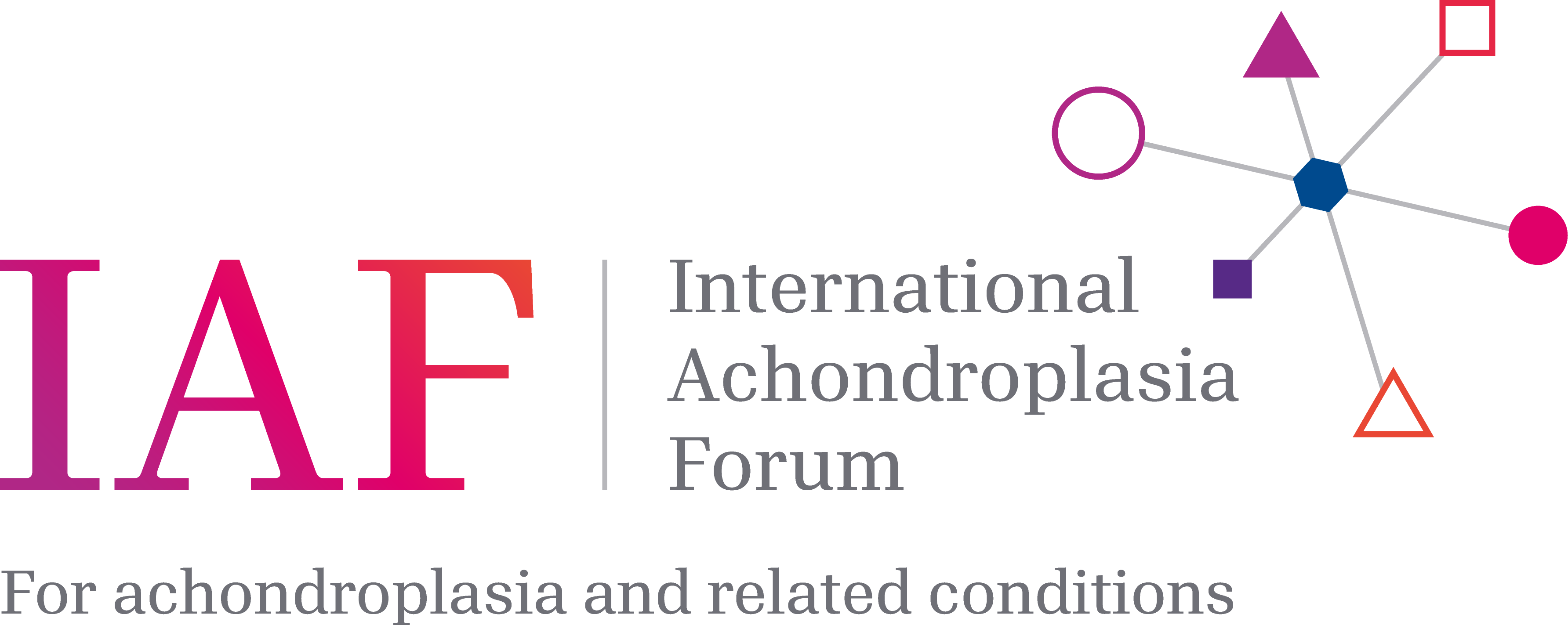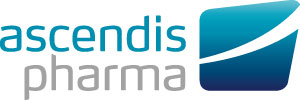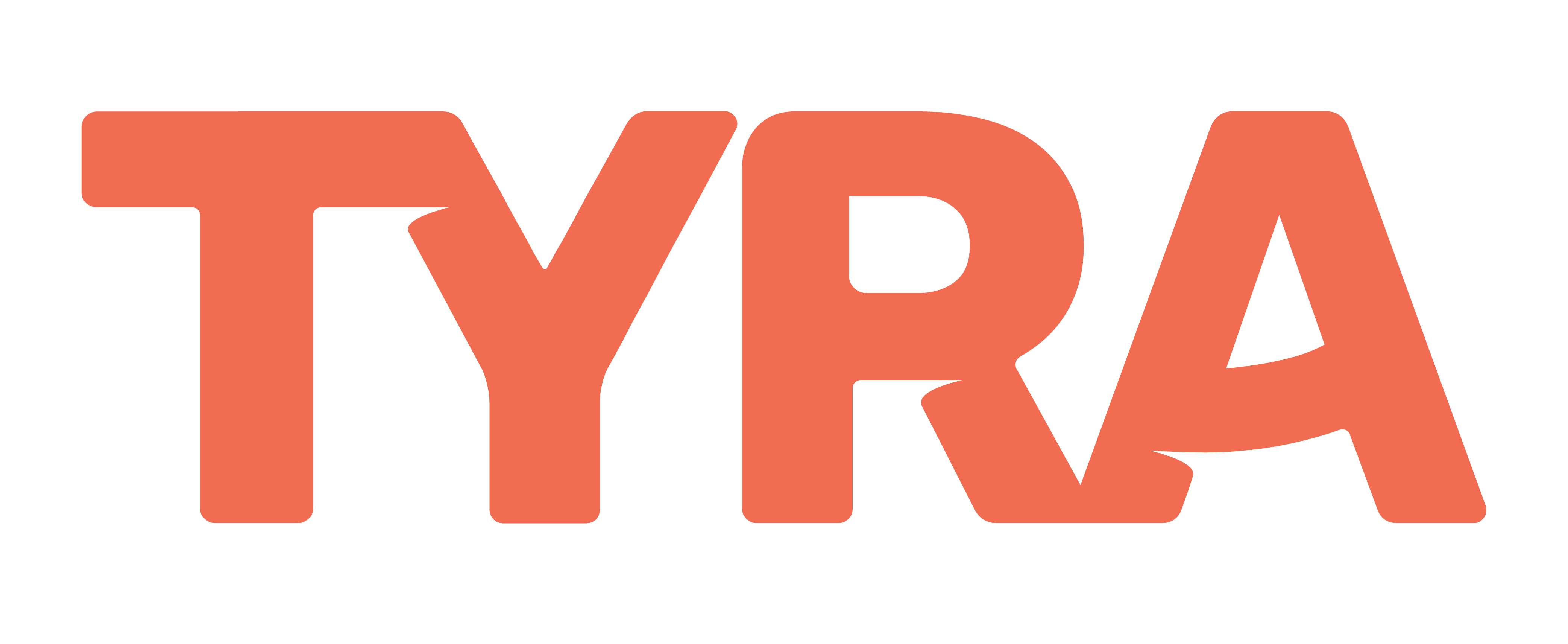
European Achondroplasia Forum: Assessing Outcomes in a New Era of Achondroplasia Treatment
This poster presents data from the EAF workshop held in April 2024 and aimed to establish whether current outcome measures are still fit for purpose in the current era of achondroplasia therapy. It is noted that current measures either do not exist or do not capture the necessary data, and agreement on a standardised core set of outcomes and, a simplified, time efficient way of collecting quality of life data is needed.
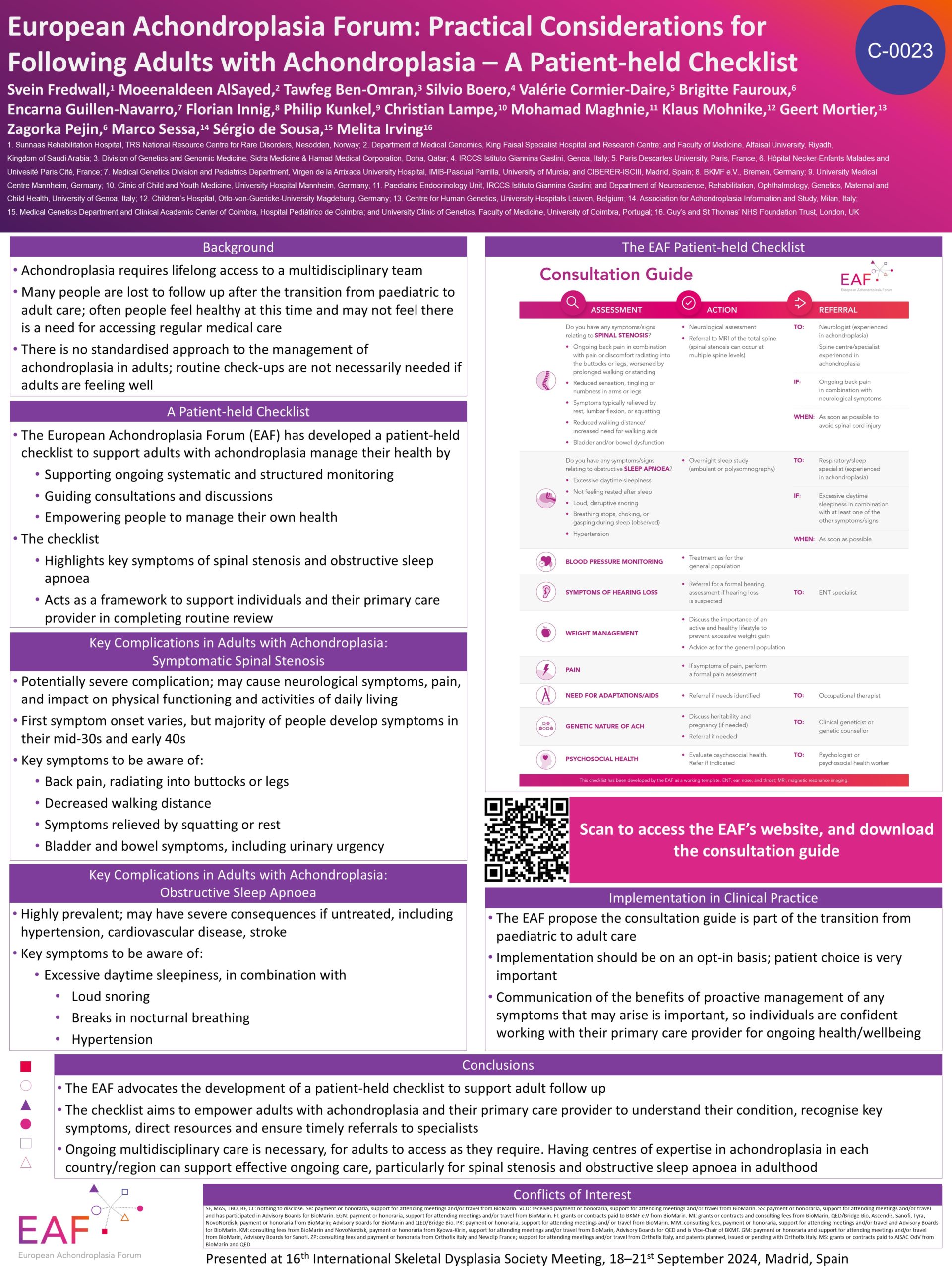
European Achondroplasia Forum: Practical Considerations for Following Adults with Achondroplasia – A Patient-held Checklist
This poster presents a patient-held checklist, developed by the EAF, to allow adults with achondroplasia to manage their own care with their primary care provider. The checklist highlights key symptoms of issues such as spinal stenosis and obstructive sleep apnoea and acts as a framework to support individuals in completing routine reviews.

Practical Considerations for Following Adults With Achondroplasia
Practical Considerations for Following Adults With Achondroplasia by Fredwall S, et al. is now available in Advances in Therapy. This manuscript addresses the challenges of providing consistent multidisciplinary care to adults with achondroplasia.

Adults with ACH Consultation Guide
The EAF have developed a Consultation Guide for adults with achondroplasia to take to routine appointments with primary care healthcare providers. The guide includes key symptoms to be aware of relating to spinal stenosis and sleep apnoea, as well as routine monitoring, and includes advice to the primary care provider on when onward referral is necessary.
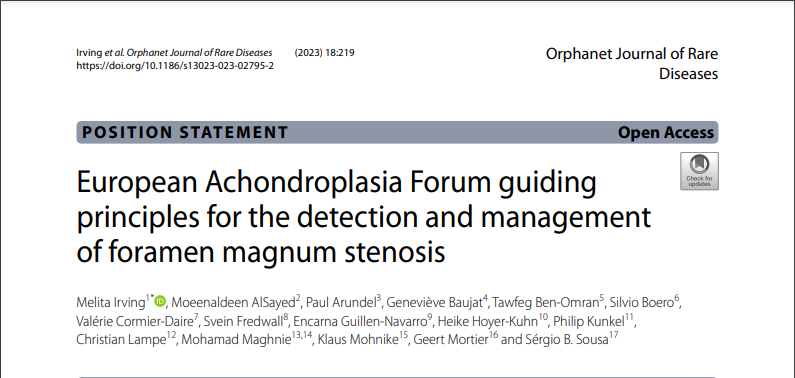
Guiding Principles for the Detection and Management of Foramen Magnum Stenosis
The EAF have developed six guiding principles for the detection and management of foramen magnum stenosis to provide clear guidance on routine clinical monitoring, timing of routine MRI screening, when to refer to a neurosurgical specialist in achondroplasia, decision-making to proceed with decompression, and management of older children in whom previously undetected FMS is identified.

Optimising Care and Follow-Up of Adults with Achondroplasia
The EAF undertook exploratory surveys to improve our understanding of the care that adults with achondroplasia receive, and the period of transition from paediatric to adult care. Some key barriers to optimal care emerged; identifying and overcoming these is crucial to improving the care of adults.
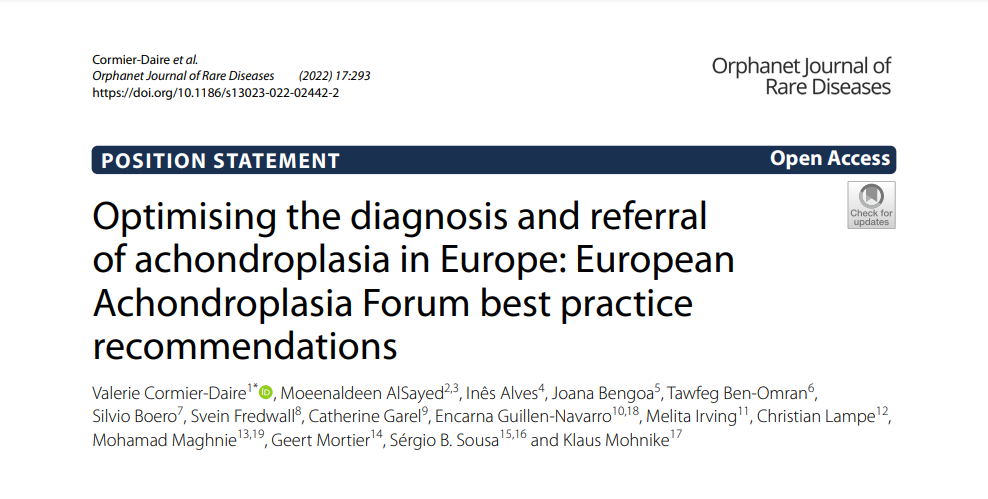
Optimising the Diagnosis and Referral of Achondroplasia in Europe: European Achondroplasia Forum Best Practice Recommendations
The EAF reviewed the timepoint of diagnosis and referral of achondroplasia in six European centres. There is often a delay in referral to a specialist centre, so the EAF developed some best practice recommendations to ensure accurate diagnosis and timely referral to a clinician or MDT specialist in achondroplasia to enable optimum management.
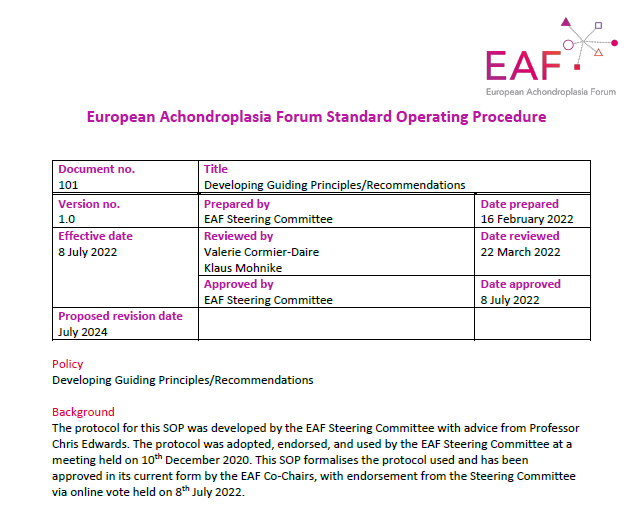
EAF Standard Operating Procedure for Developing Guiding Principles/Recommendations
The EAF is launching a set of standard operating procedures for the development of guiding principles and recommendations in achondroplasia. Click the button below to view.
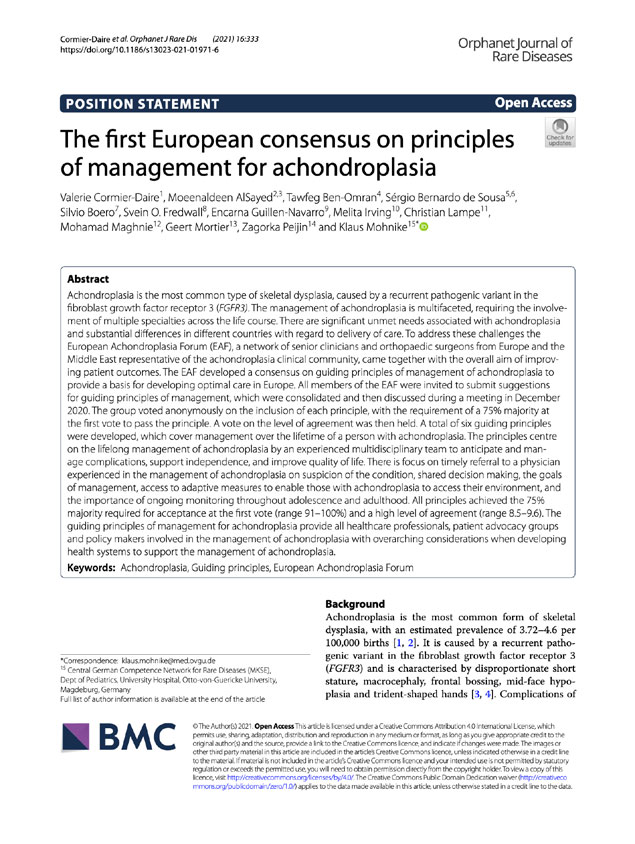
The first European consensus on principles of management for achondroplasia
The EAF’s first publication focused on developing guiding principles of management for achondroplasia. Having assessed the unmet needs associated with achondroplasia and the many differences in how the condition is managed across Europe, a consensus was reached on six overarching considerations for all healthcare professionals, patient advocacy groups and policy makers involved in the management of achondroplasia. Download below.
Useful links:
To find out more and receive regular updates about the IAF, register today.
The IAF is supported by educational grants from:
